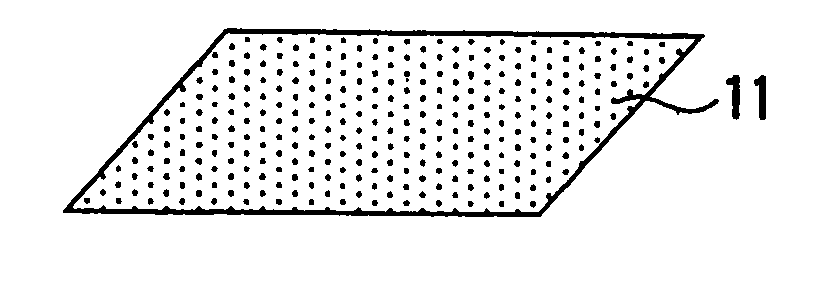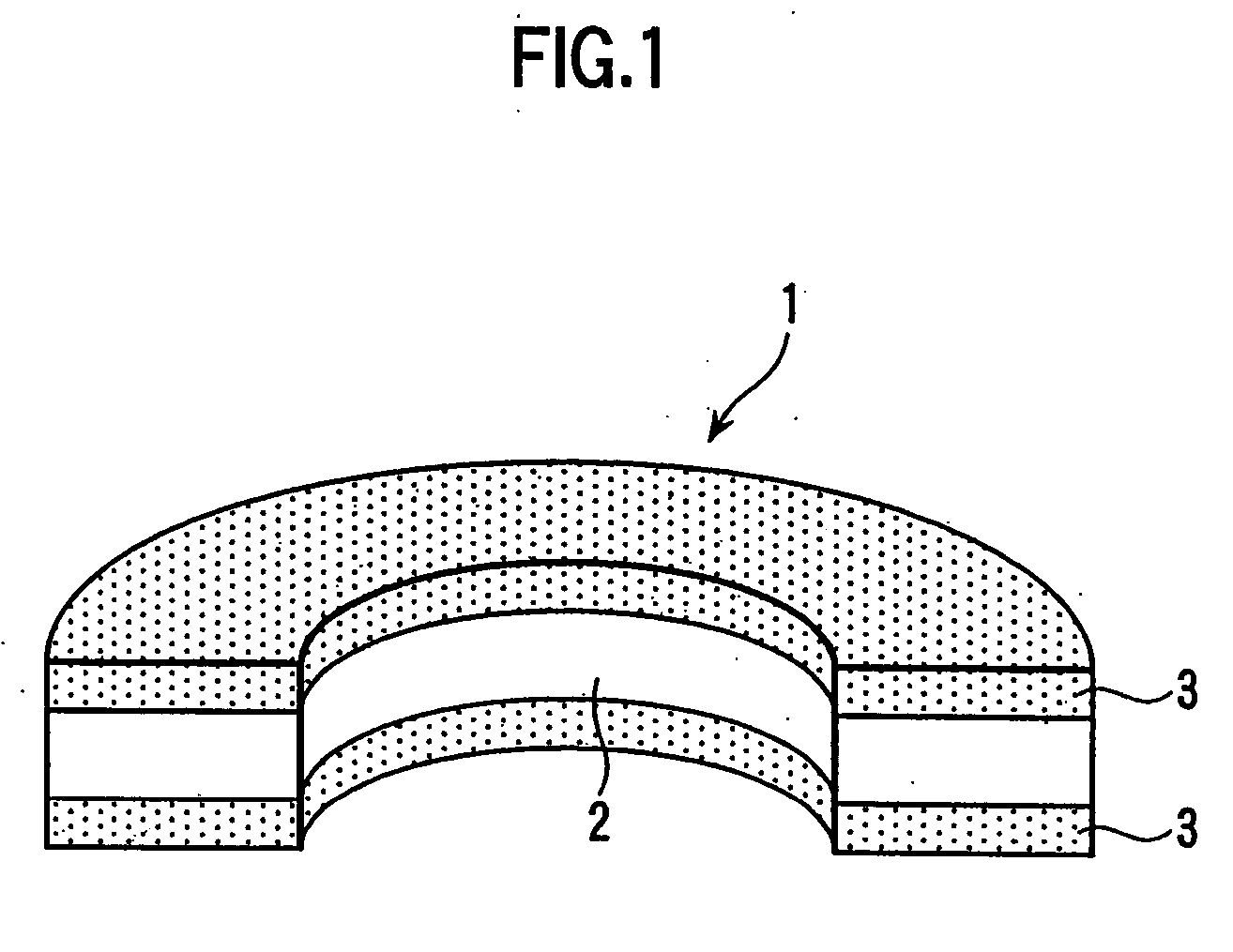Preform structure and method of manufacturing preform and bearing housing structure having the preform formed into metal matrix composite of cylinder block
a technology of bearing housing and preform, which is applied in the direction of metal extrusion, manufacturing tools, transportation and packaging, etc., can solve the problems of increased noise or vibration of engines, high defect rate, and preform subject to oxidization, so as to achieve the desired linear expansion and strength coefficient, easy infiltration of base materials, and adequate interfacial strength
- Summary
- Abstract
- Description
- Claims
- Application Information
AI Technical Summary
Benefits of technology
Problems solved by technology
Method used
Image
Examples
first embodiment
[0045]FIG. 3 and FIG. 4 are schematic views of a bearing housing structure having the preform 1 illustrated in FIG. 1. A bearing housing 17 is constituted by infiltrating aluminum alloy into the preform 1. A shaft 16 is supported by thus obtained two aluminum alloy castings 15 formed into MMC.
[0046] In case where the high Vf member 2 of the preform 1 is constituted by a stainless steel solid material SUS430 (JIS) and the low Vf member 3 is constituted by stainless steel filaments whose contents are 75%Fe-20%Cr-5%Si (weight %), the coefficient of linear expansion of the preform formed into MMC by aluminum alloy ADC12 (JIS) is 12.0×10−6 / ° C. In this case, an own coefficient of linear expansion of stainless steel filaments is 10.8×10−6 / ° C.
[0047] Accordingly, in case where the shaft 16 is made of iron base material S48C (JIS) whose coefficient of linear expansion is 11.7×10−6 / ° C., since the difference of coefficients of linear expansion between the shaft 16 and the bearing housing 17...
second embodiment
[0048]FIG. 5a and FIG. 5b show a bearing housing structure having the preform according to the present invention. In this example, the bearing housings are incorporated onto a cylinder block of a horizontally opposed four cylinder engine. The cylinder block is made of aluminum alloy (for example ADC12) casting, being divided into a left cylinder block 21 and a right cylinder block 22 which are independently cast, respectively. A plurality of left bearing housings 23 respectively having a semicircular groove are formed in the left cylinder block 21. Similarly, a plurality of right bearing housings 24 having a semicircular groove are formed in the right cylinder block 22.
[0049] A crankshaft 25 is held between the left bearing housings 23 and the right bearing housings 24 and is supported by the respective grooves of these bearing housings 23, 24. The crankshaft 25 which is formed by steel (for example S48C) rotates in the grooves while the bearing housings 23, 24 are subjected to larg...
PUM
| Property | Measurement | Unit |
|---|---|---|
| thickness | aaaaa | aaaaa |
| thickness | aaaaa | aaaaa |
| thickness | aaaaa | aaaaa |
Abstract
Description
Claims
Application Information
 Login to View More
Login to View More - R&D
- Intellectual Property
- Life Sciences
- Materials
- Tech Scout
- Unparalleled Data Quality
- Higher Quality Content
- 60% Fewer Hallucinations
Browse by: Latest US Patents, China's latest patents, Technical Efficacy Thesaurus, Application Domain, Technology Topic, Popular Technical Reports.
© 2025 PatSnap. All rights reserved.Legal|Privacy policy|Modern Slavery Act Transparency Statement|Sitemap|About US| Contact US: help@patsnap.com



